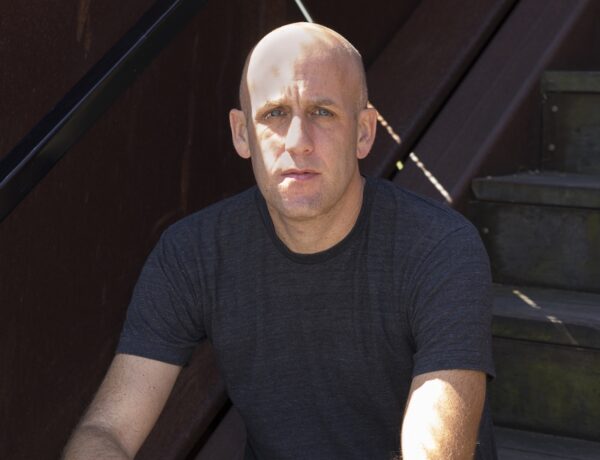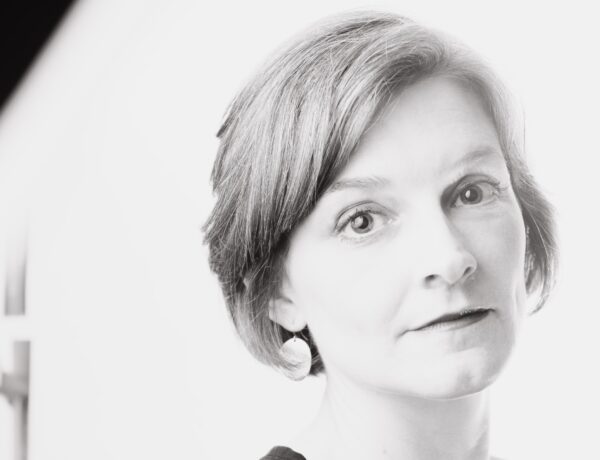Piers Torday is an award-winning and bestselling writer for children. His work has been translated into 14 languages and adapted for the stage.
His books include the Guardian Children’s Fiction Prize-winning The Last Wild trilogy, There May Be a Castle, and the Teach Primary Book Award-winning The Lost Magician series. Torday’s plays include The Box of Delights, Christmas Carol, and The Wind in the Willows at Wilton’s Music Hall.
He co-founded the Paul Torday Memorial Prize for Debut Novelists Over 60, and has been a judge for the Guardian Prize, the British Book Awards, and the Costa Book Awards. His latest book is The Wild Before.
Each week, we publish a new daily writing routine from a famous author. Subscribe to our newsletter so you don’t miss out!
Hi Piers, great to have you on Famous Writing Routines. We’re really excited to talk to you about your writing routine and process. For those who may not know, can you please tell us a little bit about yourself?
I have written seven books for children, three plays, and completed an unfinished novel by my late father, Paul Torday (The Death of an Owl).
My best known books are probably The Last Wild series, about a boy who discovers he can talk to animals in a future world where hardly any are left. They’re about mass extinction and climate change, but for readers aged eight to twelve, so the emphasis is on facing those challenges with heart, adventure and humor.
From C S Lewis to Philip Pullman, Ursula le Guin to Alan Garner, I’m inspired by those literary magicians who can conjure immersive fantasy worlds, that children who read love to lose themselves in under the duvets at night with a torch – just as I did. The Lost Magician series is my homage to the Narnia books that were my first experience of this pleasure.
I also enjoy bringing these worlds to life on stage and since 2017, every Christmas (barring 2020, due to COVID) I’ve adapted a book for Wilton’s Music Hall in London’s East End.
We started with John Masefield’s The Box of Delights and this year are staging The Wind in the Willows. As a writer stuck behind my desk, I love escaping annually to the rehearsal room, to work with other people!
Can you take us behind the creative process for your latest book, The Wild Before?
This book actually began in the summer of 2019, which feels like ancient history now, although the themes are even more resonant today. Greta Thunberg was on the march, as were wildfires – across Australia, the US and southern Europe.
Although I had written three books for children on the subject of climate change (The Last Wild trilogy), I felt I had to return for young readers for whom a warming planet was no longer distant dystopian speculation but a pressing and foreboding reality.
A lot of readers have asked me to write a fourth book in the series, to continue the adventure. But I wanted a book that celebrated the nature we still very much have, not what will happen if we lose it, so decided to write a prequel instead.
I wanted to tell a new story as well, so chose a minor animal character from The Last Wild – a brown hare. In that book, he is threatened by a mysterious virus, the red-eye, which kills nearly all the animals in the world.
The Wild Before explains how that terrifying world came to be, but also how it could have been stopped. It was to be my first book with an animal as a main character. I had visions of research trips to wildlife reserves and farms – and then, we went into lockdown.
So I had to content myself with some brilliant books on hares, and YouTube videos. I made a collection of poems with hares in, from Wordsworth to Ted Hughes, and created a very rich, lyrical vocabulary to describe these magnificent creatures. It was almost as good as seeing a real one in the wild.
Then, as the novel was a prequel, I had to re-read all the existing books, and work out what questions still needed answering, how to answer them without spoilers, how to make the story work as a standalone as well as part of a series – it was like solving a puzzle I didn’t know I had set myself.
What does a typical writing day look like for you?
I have an ideal writing day, which is to spend most of the morning writing. This isn’t always possible, because there are dogs to be walked, and as a children’s author, schools to be visited. But I find that the creative brain is somehow more in tune with the dream brain, the subconscious, the nearer to waking I write. It is also helpful to write before too many conversations with people, which can often push that reclusive sub conscious back underground.
Then that would ideally leave the afternoon for some polishing, editing and pieces of research or reading, as well as emails, admin and social media.
But life doesn’t always work like that. Over the years, I’ve more likely found myself trying to write the most important scene of the book on a delayed and overcrowded tea time train or in a hotel room miles from home. You learn to write anytime, anywhere.
I don’t think it is possible to creatively concentrate on a completely fictional world in your head for more than about 4 hours a day – although sometimes, of course, you get these crazy streaks, often when beginning or finishing a book. For me, it’s normally about maintaining as steady and constant a momentum as possible. Between 500 – 1000 words a day on the page means the book keeps growing and the characters, the world, keep on living and developing in your head.
Do you have a target word count that you like to hit each day?
When I start my first draft I deliberately begin low with the word count – say 250-300 words a day – to ease myself into the marathon of writing a book, not to say the world, narrative voice and minds of the characters.
Then on good days, I might hit a peak of 1000, but I try to avoid ever writing more than 1000 words a day, only because it is hard to maintain that and I find momentum more useful when drafting (the story continues to grow each day regardless of mood or weather) rather than making big leaps.
Scrivener calculates a word count in order to make your deadline, and I use this as a helpful guide, but it is also important not to get hung up on word counts and remember that ultimately the reader is only interested in the story, not how quickly you wrote it.
So a hundred valuable words is always a win, and better than no words, even if it means you aren’t moving as fast as you’d like. That just isn’t always possible because sometimes other matters are preoccupying you, the well of inspiration needs topping up, or you just didn’t have time.
On average, each day, when mid-draft, that works out at 450-650 words a day and that is plenty to be going on with, more than enough to write a first draft in reasonable time.

Can you talk about some of your must-have writing tools?
After a complete disaster with MS Word and misnamed drafts and lost drafts, and unrecovered files – mainly my fault, not Microsoft’s- while writing my first book, The Last Wild, Scrivener came to the rescue.
It is not for everyone, and needs a week or so of playing with to understand (so not one to start when on deadline) but the visual, intuitive way it arranges scenes and chapters in a left hand binder column, and allows you to save multiple versions of those scenes and chapters – is genius.
I have enough notebooks to fill a small mausoleum, which is probably the best place for them, as I either forget to use them, or if I do, can’t read my own writing – which makes a doctor’s scrawl look legible. Instead, I tend to use Notes on my iPhone or the comment feature on Scrivener – so when I return to the manuscript the thought is there waiting for me.
Partly a habit, partly to block out the world, and partly because nothing accesses the emotions more directly, I never go anywhere without my earbuds and Spotify playlists, downloaded if need be. From screen scores to classical, I compile playlists for each book and often each chapter, which help me tune into that world and silence distraction.
Whenever you hit a roadblock during a writing session, what are some of the methods you use to get back into the flow of things?
The first thing is to try and diagnose the block. Am I just tired, or creatively worn out? A brisk walk can re-energise the senses and get the subconscious back in tune with the body. But if I feel flat and devoid of inspiration, I try a creative blast such as visiting an exhibition of an artist I’ve never heard of before or going to watch a film I wouldn’t normally see.
If I am restless and can’t focus, one useful exercise is just to make a to-do list. Or two. At busy times, it can be hard to protect that deep working cognitive space the brain needs to create fiction. Sometimes, just getting that free floating list of chores or even anxieties out of my head and onto the paper, can unblock the creative flow.
And if that fails, then strange and unproductive as it may sound, guilty as it may make me feel – I just walk away. To go on holiday, take on another short project, read… Then when I return, be it two weeks or two months later, the manuscript will still be there, but it will feel like a fresh start.
What does your writing workspace look like?
I write in the back bedroom of our house, converted into my office, overlooking our garden. It has a flat roof and is south-facing, so I often have the shutters half closed if I’m writing first thing in the morning, and during heat waves, it is like a sauna.
But most of the year it is quiet and pleasantly cool. I painted the walls “Racing Green” because I read somewhere that green is a creative color that aids focus and concentration, but have no idea if that is actually true.
I sit at my father’s old mahogany writing desk but with a rather unattractive standing desk on top, which I extend for Zooms and emails (but write sitting down). I have suffered from horrendous back and posture problems in the past, like many writers, so I invested in an outrageously expensive office chair with custom settings that has been worth every penny.
The desk has extendable wings which are bent with piles of books to keep within arms reach, while writing, for notes, quotes, fact-checking, inspiration. I am sort of halfway between a cluttered desk writer and Zen desk writer, I like orderly chaos!
To my right is a fitted bookcase that contains my collection of children’s books, my own books in different editions and various reference works, plus the pile of proofs of new books I am meant to be reading, as well as some of the lovely things I get given by children and schools – drawings, teddy bears, bookmarks.
On the floor, there is a big cushion which the dog occasionally designs with his company and my dad’s old leather armchair for reading. The walls are, I am only half ashamed to say, covered with framed book and play posters of my own stuff “my ego wall” because not only does it really boost your confidence when you are feeling completely bleak and incapable of any creative achievement, but they make a good Zoom background!
Before you go…
Each week, we spend hours upon hours researching and writing about famous authors and their daily writing routines. It’s a lot of work, but we do it out of our love for books and learning about these authors’ creative process, and we certainly don’t expect anything in return. However, if you’re enjoying these profiles each week, and would like to send something our way, feel free to buy us a coffee!



No Comments